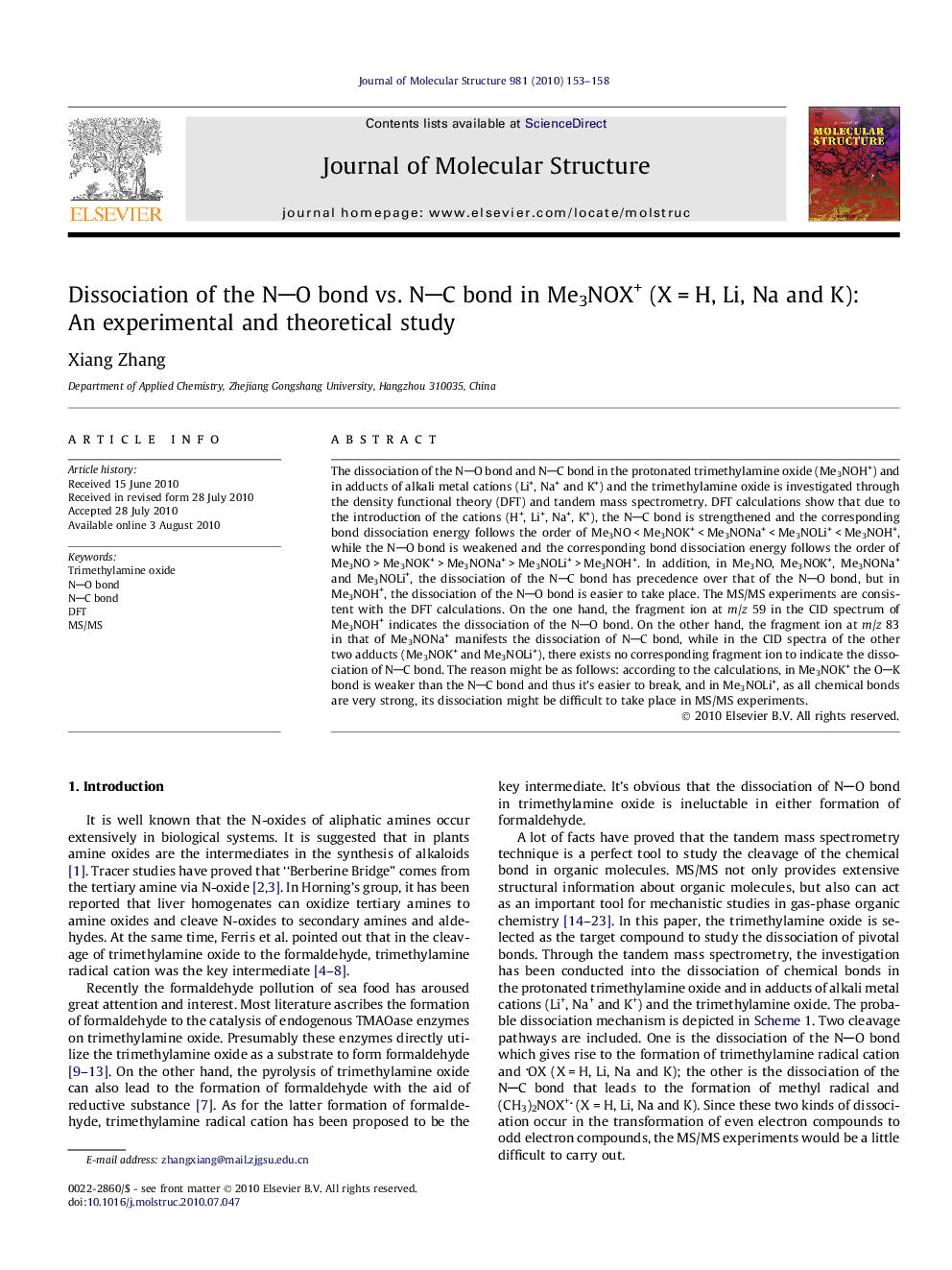| Article ID | Journal | Published Year | Pages | File Type |
|---|---|---|---|---|
| 1409783 | Journal of Molecular Structure | 2010 | 6 Pages |
Abstract
The dissociation of the NO bond and NC bond in the protonated trimethylamine oxide (Me3NOH+) and in adducts of alkali metal cations (Li+, Na+ and K+) and the trimethylamine oxide is investigated through the density functional theory (DFT) and tandem mass spectrometry. DFT calculations show that due to the introduction of the cations (H+, Li+, Na+, K+), the NC bond is strengthened and the corresponding bond dissociation energy follows the order of Me3NOÂ <Â Me3NOK+Â <Â Me3NONa+Â <Â Me3NOLi+Â <Â Me3NOH+, while the NO bond is weakened and the corresponding bond dissociation energy follows the order of Me3NOÂ >Â Me3NOK+Â >Â Me3NONa+Â >Â Me3NOLi+Â >Â Me3NOH+. In addition, in Me3NO, Me3NOK+, Me3NONa+ and Me3NOLi+, the dissociation of the NC bond has precedence over that of the NO bond, but in Me3NOH+, the dissociation of the NO bond is easier to take place. The MS/MS experiments are consistent with the DFT calculations. On the one hand, the fragment ion at m/z 59 in the CID spectrum of Me3NOH+ indicates the dissociation of the NO bond. On the other hand, the fragment ion at m/z 83 in that of Me3NONa+ manifests the dissociation of NC bond, while in the CID spectra of the other two adducts (Me3NOK+ and Me3NOLi+), there exists no corresponding fragment ion to indicate the dissociation of NC bond. The reason might be as follows: according to the calculations, in Me3NOK+ the OK bond is weaker than the NC bond and thus it's easier to break, and in Me3NOLi+, as all chemical bonds are very strong, its dissociation might be difficult to take place in MS/MS experiments.
Keywords
Related Topics
Physical Sciences and Engineering
Chemistry
Organic Chemistry
Authors
Xiang Zhang,
